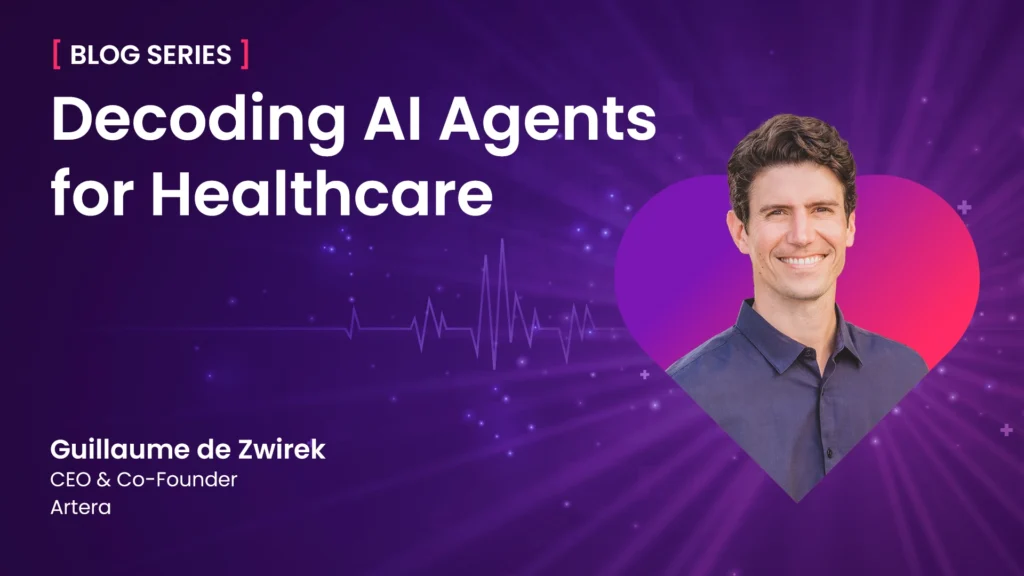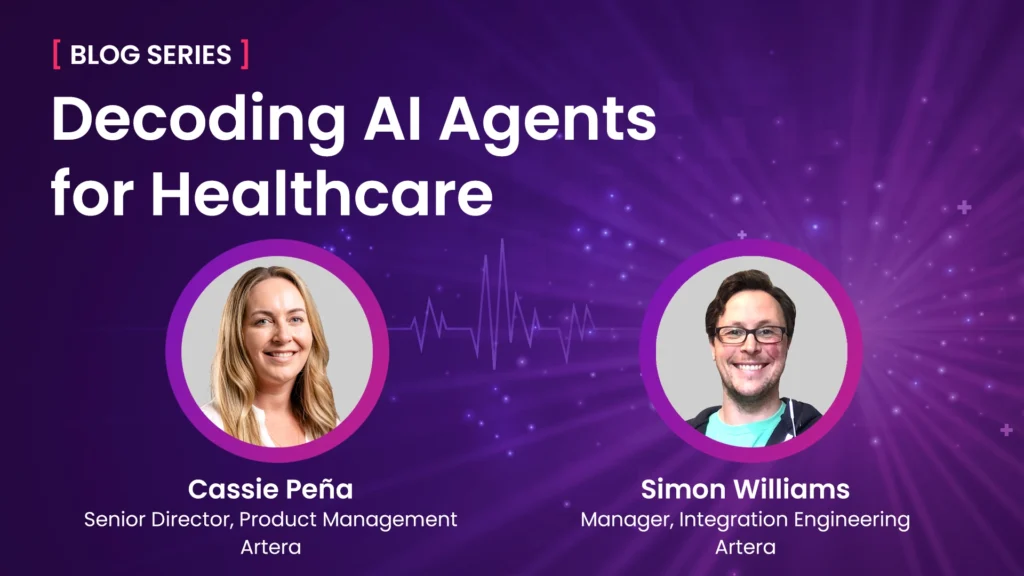Artificial intelligence (AI) in healthcare is advancing at a rapid pace, offering organizations opportunities far beyond what early chatbot technologies could provide. Today’s solutions leverage the latest in AI technologies to deliver automated engagement, operational efficiency, patient journey intelligence and more. For health system executives, CIOs and innovation teams, the future of AI in healthcare is about scalable transformation strategies that streamline enterprise deployment and drive true patient impact.
While chatbots once offered basic help, many organizations quickly ran into the limits of generic workflows, low adoption of digital tools, and slow EHR response times. These pain points have encouraged a shift toward more sophisticated systems. This evolution is not just about smarter conversations; it is about deploying intelligent agents that perform end-to-end tasks, paving the way for the future of AI in patient communications. These agentic systems address high-volume, low-acuity needs, automate traditionally manual processes, and help healthcare systems scale with AI, moving well beyond the chatbot.
In this post, we’ll explore how healthcare organizations can move beyond limited chatbot functionality by implementing comprehensive AI technologies, highlighting the measurable benefits and real-world use cases that advance both patient and provider goals. Whether you’re seeking an AI transformation strategy, ready for enterprise AI deployment, or interested in the next generation of scalable patient engagement, discover why AI in healthcare is evolving fast and how Artera goes beyond bots with proven, HIPAA-compliant solutions.
The Rise of Agentic Systems in Healthcare
The next wave of AI in healthcare is centered on agentic systems. This term refers to intelligent agents capable of performing complex, multi-step tasks autonomously. As Artera CEO Guillaume de Zwirek noted in a recent healthsystemCIO report, the call center is an area rich with measurable tasks ripe for this type of automation. Instead of just answering a question, these AI agents can complete an entire process on behalf of the patient.
What makes this possible is the integration of several advanced technologies:
- Speech-to-text and Text-to-speech: These capabilities allow AI to understand and respond to patients over the phone, creating a natural and accessible user experience.
- Large Language Models (LLMs): LLMs provide the conversational intelligence needed to understand patient intent, handle variations in language, and carry out nuanced interactions.
- Guarded API Calls: Secure connections to other systems, like the Electronic Health Record (EHR), allow the AI agent to access information and perform actions such as booking an appointment or checking the status of a prescription refill.
By stitching these technologies together, agentic systems can handle a wide range of tasks from start to finish. This includes appointment verification, rescheduling, medication refills, portal password resets, and answering routine informational requests. The key difference from a simple chatbot is the ability to execute tasks, not just provide information.
Moving from Hype to Measurable Outcomes
For a long time, AI was seen as a “solution in search of a problem,” according to de Zwirek. Today, its application in patient communications is solving clear and urgent challenges. Healthcare leaders are no longer interested in AI for its own sake; they demand solutions that address concrete problems and move key performance indicators (KPIs). Agentic systems are delivering on this demand by producing tangible, measurable results.
Reducing Friction in Call Centers
Call centers are a major source of administrative burden and patient frustration. Long hold times, multiple transfers, and inconsistent information are common complaints. AI agents can automate a significant portion of inbound call volume, freeing up human staff to focus on more complex, high-acuity patient needs. By handling routine requests instantly, these systems drastically reduce wait times and improve first-call resolution rates. Patients get what they need faster, and staff are less overwhelmed.
Enhancing the Patient Experience
A better operational process naturally leads to a better patient experience. When a patient can call after hours to reschedule an appointment or confirm their medication has been refilled without waiting for a human agent, their satisfaction increases. This 24/7 availability meets modern consumer expectations and removes common barriers to care. It ensures that every patient interaction is efficient and productive, building trust and loyalty over time.
Improving Operational Efficiency
The automation of high-volume tasks has a direct impact on the bottom line. By reducing the manual workload on administrative teams, healthcare organizations can optimize resource allocation and lower operational costs. Staff who previously spent their days on repetitive phone calls can be redeployed to higher-value activities. This improved efficiency allows health systems to serve more patients effectively without a proportional increase in administrative headcount.
The Critical Role of Governance and Transparency
With greater capability comes greater responsibility. As AI agents take on more complex tasks, the need for robust governance and oversight becomes paramount. Deploying these systems is not a “set it and forget it” process. Health systems must establish clear frameworks to ensure these tools operate safely, accurately, and transparently.
Artera CEO Guillaume de Zwirek highlights several non-negotiable components for effective governance:
- Live Transcripts: Every interaction between an AI agent and a patient should be transcribed in real time. This provides a complete record for quality assurance, auditing, and troubleshooting.
- Accuracy Scores: Systems must be able to measure and report on the accuracy of the information provided and the tasks completed. This data is essential for ongoing performance monitoring and improvement.
- Vendor Transparency: Healthcare organizations need to understand how a vendor’s AI models are built, trained, and updated. This includes clarity on data tenancy and how patient information is handled.
- Clear Handoffs: When an AI agent cannot resolve an issue, there must be a seamless and clearly defined process for escalating the interaction to a human agent.
This level of instrumentation ensures that health systems maintain control and visibility over automated interactions. It allows leaders to trust that the technology is performing as expected while providing the data needed to demonstrate compliance and value to executive boards and other stakeholders.
Transforming Healthcare Strategy with Scalable AI
For health system executives, CIOs, and innovation leaders, now is the time to consider how comprehensive AI technologies can elevate enterprise strategy and patient engagement. The new generation of AI tools—such as Artera Harmony, AI Co-Pilots, Healthcare API Integrations, and Smart Inbox—are designed for scalable deployment across your organization’s digital infrastructure. These solutions drive automated engagement, foster patient journey intelligence, and strengthen operational efficiency with HIPAA-safe AI at the core.
Forward-thinking organizations are already leveraging these capabilities to move beyond limited chatbot functionality and generic workflows. They are implementing tailored transformation strategies and enterprise-wide AI deployments that improve adoption, accelerate digital maturity, and optimize every step of the patient journey.
Paving the Way for a More Efficient Future
The evolution of AI in healthcare from simple chatbots to sophisticated agentic systems marks a significant step forward. These tools are no longer just a novelty; they are essential infrastructure for modern healthcare delivery. By automating high-volume, low-acuity tasks, AI agents are solving tangible problems related to administrative burden, patient access, and operational efficiency. They are enabling healthcare organizations to become more responsive, resilient, and patient-centric.
The journey is far from over, but the path is clear. With a focus on measurable outcomes and a commitment to strong governance, AI will continue to expand its role in healthcare. The “agents at the front door” are just the beginning of a larger transformation, one that promises to create a more streamlined and effective healthcare system for everyone.



